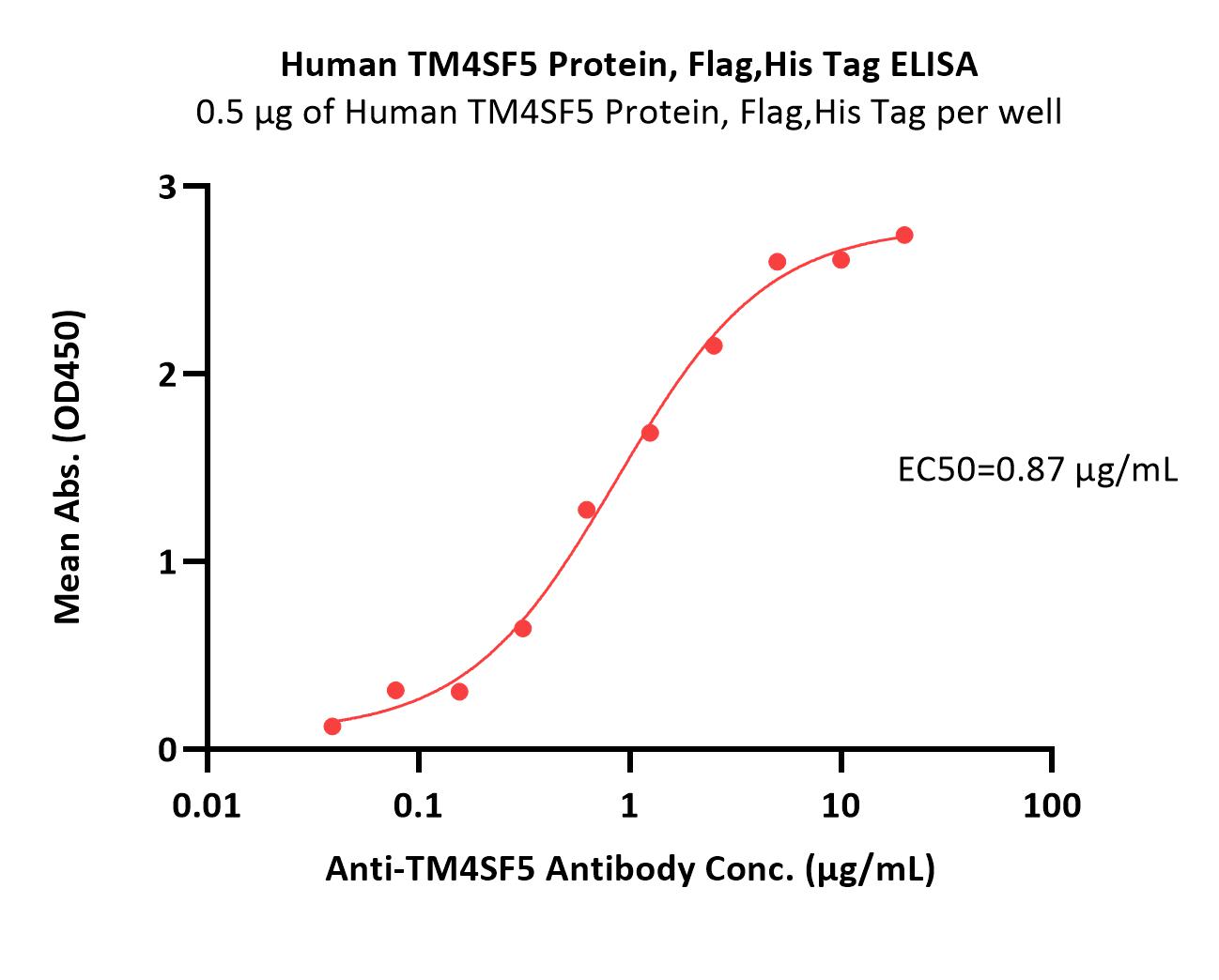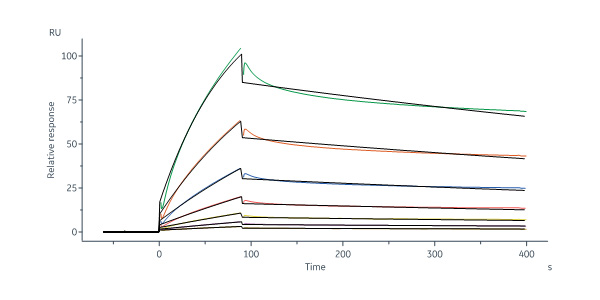分子别名(Synonym)
TM4SF5
表达区间及表达系统(Source)
Human TM4SF5 Protein, Flag,His Tag (TM5-H52D3) is expressed from human 293 cells (HEK293). It contains AA Cys 2 - His 197 (Accession # O14894).
Predicted N-terminus: Met
Request for sequence
蛋白结构(Molecular Characterization)

This protein carries flag tag at the N-terminus and polyhistidine tag at the C-terminus.
The protein has a calculated MW of 24.4 kDa.
内毒素(Endotoxin)
Less than 1.0 EU per μg by the LAL method.
纯度(Purity)
>90% as determined by SDS-PAGE.
制剂(Formulation)
This product is not suitable for cell based experiments due to cytotoxicity of DDM.
DDM and CHS are INDISPENSABLE to keep membrane protein soluble and active, under no circumastance should you remove DDM and CHS.
DDM/CHS buffer (DC-11) is sold separately and not included in protein, and please contact us if you need the buffer.
If glycerol is not compatible to your application, remove glycerol just before immediate experiment, and NEVER store glycerol-free protein solution.
Supplied as 0.2 μm filtered solution in 50 mM HEPES, 150 mM NaCl, DDM, CHS, pH7.5 with glycerol as protectant.
Contact us for customized product form or formulation.
运输(Shipping)
This product is supplied and shipped with dry ice, please inquire the shipping cost.
存储(Storage)
Please avoid repeated freeze-thaw cycles.
This product is stable after storage at:
- The product MUST be stored at -70°C or lower upon receipt;
- -70°C for 3 months under sterile conditions.
质量管理控制体系(QMS)
活性(Bioactivity)-ELISA

Immobilized Human TM4SF5 Protein, Flag,His Tag (Cat. No. TM5-H52D3) at 5 μg/mL (100 μL/well) on a Nickel Coated plate can bind Anti-TM4SF5 Antibody with a linear range of 0.039-2.5 μg/mL (QC tested).
Protocol
活性(Bioactivity)-SPR

Anti-TM4SF5 Antibody captured on Protein A Chip can bind Human TM4SF5 Protein, Flag,His Tag (Cat. No. TM5-H52D3) with an affinity constant of 131 nM as determined in a SPR assay (in presence of DDM and CHS) (Biacore 8K) (Routinely tested).
Protocol
背景(Background)
The protein encoded by this gene is a member of the transmembrane 4 superfamily, also known as the tetraspanin family. Most of these members are cell-surface proteins that are characterized by the presence of four hydrophobic domains. The proteins mediate signal transduction events that play a role in the regulation of cell development, activation, growth and motility. This encoded protein is a cell surface glycoprotein and is highly similar in sequence and structure to transmembrane 4 superfamily member 1. It may play a role in cell proliferation, and overexpression of this protein may be associated with the uncontrolled growth of tumour cells. [provided by RefSeq, Jul 2008]























































 膜杰作
膜杰作 Star Staining
Star Staining










 Loading ...
Loading ...




